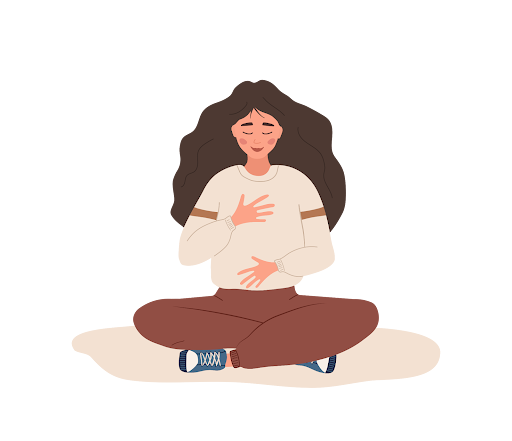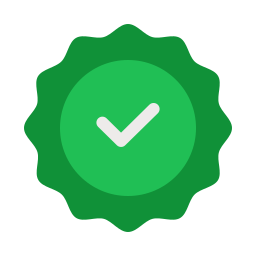Breathing Troubles: Understanding COPD Symptoms and Risk Factors

Effective Breathing Techniques For COPD Lungs: Befriending Your Breath
03 Jun 2024
Breathing is as natural as the rising sun and as vital as the heart’s rhythmic throb. But, for those living with Chronic Obstructive Pulmonary Disease (COPD), each breath can seem like a herculean task. COPD lungs are often marked by airway obstruction and alveolar damage, both of which can restrict oxygen flow and make breathing a struggle. However, this does not mean that COPD patients are sentenced to a life of breathlessness. With certain modifications and techniques, it is possible to manage the symptoms effectively.
Recognising this need for improved breathing in COPD, healthcare professionals have devised certain breathing techniques specifically targeting the unique challenges posed by the disease. These techniques aim to control breathlessness, improve COPD lung function and lend a sense of empowerment to those dealing with COPD. They offer a glimmer of hope and stand testament to human resilience in face of adversity. This blog aims to address these techniques with clarity and simplicity, empowering you with knowledge that will literally help you breathe easier.
So, let’s plunge into the world of these carefully designed breathing techniques for COPD lungs and understand how each one holds potential to make every breath count. After all, it’s not just about living longer; it’s about living better.
Breathing Comfortably with COPD: Techniques to Try
Living with COPD can often feel like you’re fighting a constant battle with your own lungs. As the disease progresses, COPD lungs struggle in their function, causing airway obstruction and alveolar damage. This can make it harder for you to breathe and get the oxygen your body needs. But here’s some good news! You can regain some of that control through effective breathing techniques.
Managing lung damage in COPD can be done by redesigning your life in ways that make breathing easier. Experts suggest that simple adjustments in our breathing patterns can go a long way in alleviating COPD symptoms. Let’s dive into these techniques and understand how they work.
Mastering the Art of Pursed-Lip Breathing
Pursed-lip breathing is a simple yet powerful technique that COPD patients can use to control their breath, reduce shortness of breath and anxiety and improve lung function over time. When practised regularly, this technique may also help to prevent COPD exacerbation and further deterioration of lung health.
Inhale slowly through your nose, keeping your mouth closed. Then exhale gently through pursed lips, like you’re blowing out a candle or sipping a hot beverage. The exhalation should be twice as long as the inhalation. This slow release of air helps to open up obstructed airways and relieve the feeling of breathlessness.
Coordinating Breath with Movement: The Diaphragmatic Way
For COPD patients, everyday tasks like bending down or lifting objects can cause breathlessness due to increased pressure on the diaphragm. Diaphragmatic breathing, also known as belly breathing, aims to strengthen the diaphragm muscle thereby improving its efficiency in aiding respiration. This can help alleviate airway obstruction in COPD patients.
To start, sit comfortably or lie flat on your back. Place one hand on your chest and the other on your belly. Breathe in slowly through your nose, making sure your belly rises more than your chest. This signals that you’re engaging your diaphragm rather than relying solely on your chest muscles. Exhale slowly, again making sure that the belly deflates more than the chest.
The Role of Prone Positioning in COPD
The prone position, or lying on your stomach, may be beneficial for some COPD patients, especially those with severe emphysema and lung function issues. It helps to improve oxygenation by reducing atelectasis (collapse of air sacs) and redistributing blood flow within the lungs. This can help alleviate alveolar damage in COPD.
It’s advisable to start this practice with short sessions until you get comfortable with it. For those with chronic bronchitis and lung function issues due to mucus production, this position can facilitate mucus drainage from the lungs, thus improving ease of breathing.
Breathing Through Exacerbations: The Huff Cough Technique
Difficulties in clearing mucus from lungs due to airway obstruction in COPD patients can lead to infection and exacerbations. The Huff Cough technique can prove useful in these circumstances by promoting effective clearance of mucus. This can help alleviate COPD exacerbation and lung health.
To perform the huff cough, take a breath slightly deeper than a normal one. Use your stomach muscles to blow out the air in three even breaths while making the sound ‘ha, ha, ha’ as if you’re fogging up a mirror.
COPD and Yoga: Breathing Exercises for Overall Well-being

Yoga has been widely recognised for its holistic approach towards health. Specific yogic breathing exercises, also known as pranayamas, can help COPD patients manage their symptoms and improve overall lung function.
Anulom Vilom or alternate nostril breathing is one such exercise which balances the body’s energy levels and enhances lung capacity. Similarly, Bhramari pranayama or humming bee breath is known for its soothing impact on the nervous system and can help alleviate stress, a common trigger for COPD exacerbations.
In conclusion, we’ve journeyed through the complexities of airway obstruction in COPD, alveolar damage in COPD, and their impacts on lung function. We’ve delved into the effects of chronic bronchitis and emphysema on our lungs, and how exacerbations further hinder lung health. Now, you are equipped with knowledge not only about the challenges that come with COPD, but also about the power of effective breathing techniques to combat COPD airflow limitation. Remember, consistent practice of these breathing techniques could potentially ease your journey with COPD.
If you wish to learn more or need further guidance in managing your COPD lungs, do get in touch with us at tatvacare.in. Our knowledgeable team is here to help you navigate your health journey.
FAQs
Q. Can breathing exercises help in managing COPD symptoms?
A: Yes, practicing specific breathing techniques can greatly assist in managing symptoms of COPD. Exercises such as pursed-lip breathing and diaphragmatic breathing can help strengthen your lungs, improve oxygen levels in your blood, and reduce breathlessness.
Q. How often should I practice these breathing techniques?
A: Consistency is key when it comes to breathing exercises for COPD. Aim to practice at least once daily. Regular practice will ensure that these techniques become second nature, offering relief during episodes of shortness of breath.
Q. Can I do these exercises without any supervision?
A: While these exercises can generally be practiced independently, it’s advisable to learn them under the guidance of a healthcare professional initially. They can correct your technique if needed and ensure you’re doing them safely and effectively.
Q. What should I do if I feel dizzy or lightheaded while practicing breathing exercises?
A: If you experience dizziness or lightheadedness during your breathing exercises, stop immediately and rest. This could indicate that you’re not getting enough oxygen. Consult with your doctor if these symptoms persist as it may require adjustment of your technique.
Q. Are there any other lifestyle changes that can help manage COPD along with breathing exercises?
A: Absolutely! Alongside regular practice of breathing exercises, maintaining a healthy lifestyle is crucial in managing COPD. This includes a balanced diet, regular physical exercise, quitting smoking, and limiting exposure to air pollutants.

Medically reviewed by
Dr. Devina Aswal 
MBBS, DDM, FCR, CIC
Recent Blog
- AI in Healthcare: Not a Threat, but a Smart Ally
- Your Clinic. Your Website. Your Brand.
- CDSS – Revolutionising Diagnosis with AI-Powered Clinical Decision Support System
- Handwritten to Digital in Seconds: SmartSync Converts Prescriptions Instantly
- Voice Rx by TatvaPractice: A Smarter Way to Digitise Prescriptions
Archives
Categories
- Asthma (20)
- Diabetes (15)
- Fatty Liver (20)
- High Blood Pressure (2)
- High cholesterol (2)
- Hypertension (2)
- Insulin Resistance (1)
- Obesity (8)
- PCOS (6)
- TatvaPractice (13)
Let’s Connect
Quick contact



